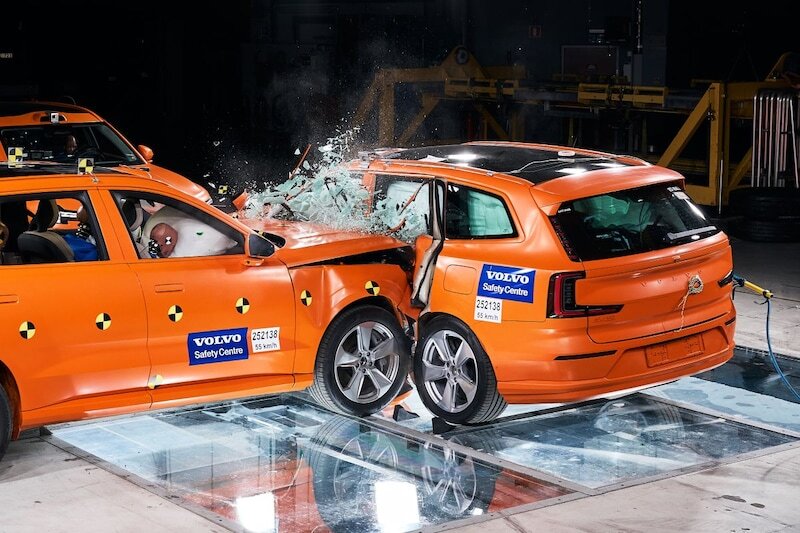
Few car brands openly embrace safety as much as Volvo. Successfully, because who doesn’t associate the Swedish brand with safety? It’s no wonder that the Volvo Safety Center is opening its doors to us on the occasion of its 25th anniversary.
All car brands work around the clock on safety. The requirements are different all over the world and particularly strict on some continents. Crash tests are carried out, cars are submerged in water, and hard work is being done on electronic aids that keep the driver in line when he is not paying attention. But there is no manufacturer that promotes this as much as Volvo. The Swedish brand has been doing this from the very beginning and even formulated a mission a few years ago that no one should be killed or seriously injured in a Volvo.
At the Volvo Safety Center on the factory site just outside Gothenburg, cars are destroyed almost daily in order to achieve this goal. Cars are smashed against poles, rammed against each other or rolled out of the building. And we don’t mean on the wheels.
Engineers work on cars, but there are also scientists who are only concerned with human behavior. Because, as they like to say there, ‘the best accident is the accident that didn’t happen’. You and I behind the wheel are at least as important a factor as all those airbags, braking systems and cage constructions. That is why, for example, there is also a team that goes out when there is a serious accident near Gothenburg involving a Volvo. Because you may learn the most from the real world.
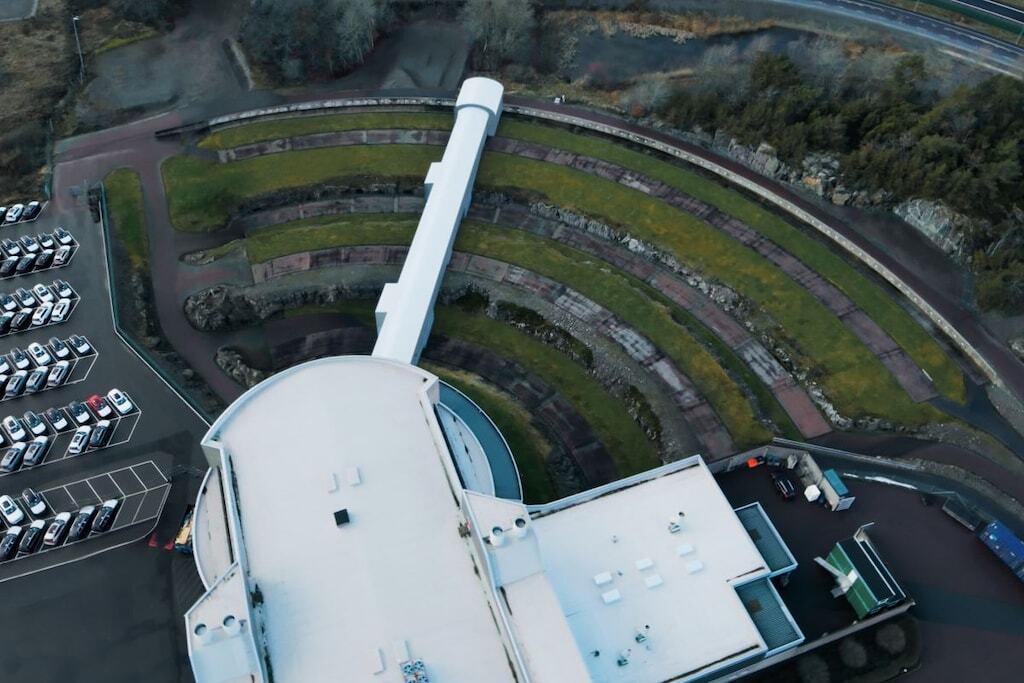
25 years of Safety Center: more than 7,000 crash tests
Although the vast majority of crash tests now take place virtually, real cars are still crashed. A few hundred real tests versus tens of thousands of digital tests. Because although almost everything can be calculated, real tests still provide useful insights. The crash test center consists of a central hall with two ‘arms’ of 108 and 154 meters respectively. These arms are long corridors through which the perpetrator cars drive to hit the victim car in the middle of the hall. That center is surrounded by particularly bright light and high-speed cameras that capture every detail in thousands of seconds. The victim is also on a transparent floor, so that it can also be filmed from below. The longest of those arms is movable, so that the angle at which it is crashed is variable. We can test up to 120 km/h. We can also use the non-movable arm the other way around. Then a car is pushed sideways to the outside, to roll over there.
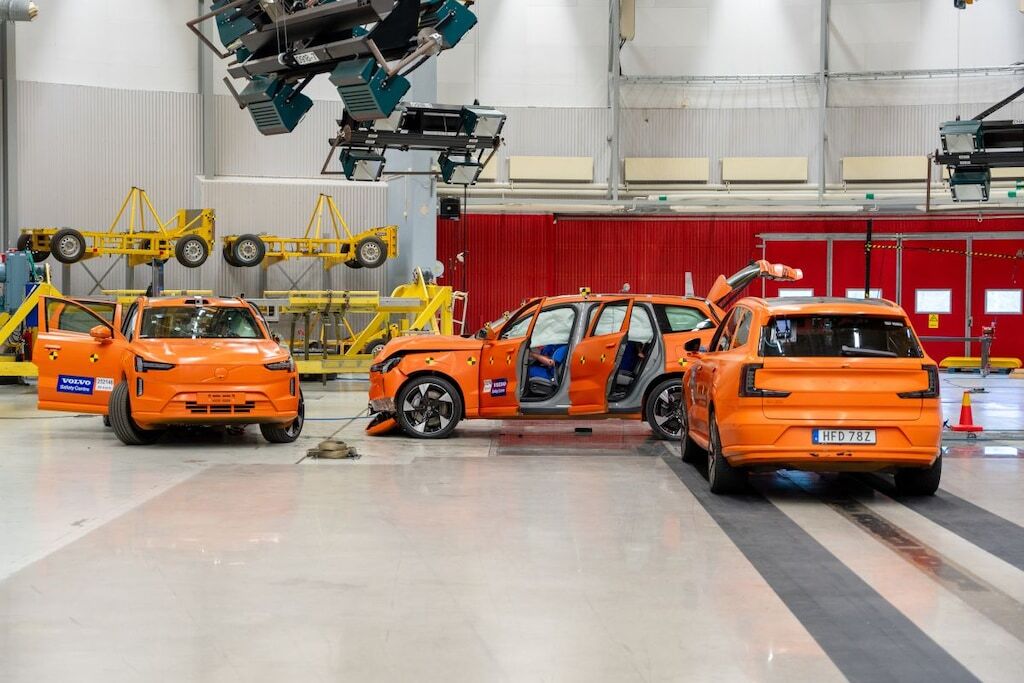
Crashing with electric cars
When the center opened a quarter of a century ago, there were no electric cars yet. Now they are. Has that led to changes in the crash lab? We ask Thomas Broberg, senior safety advisor at the center. “No, in principle nothing has changed. In the beginning we only did the tests with EVs outside, but now we are so convinced of the safety of the batteries that we also do those tests in the hall. But you do see that there are now two forklifts with drivers ready for a crash test. If something catches fire or smolders, we immediately drive the wrecks outside.”
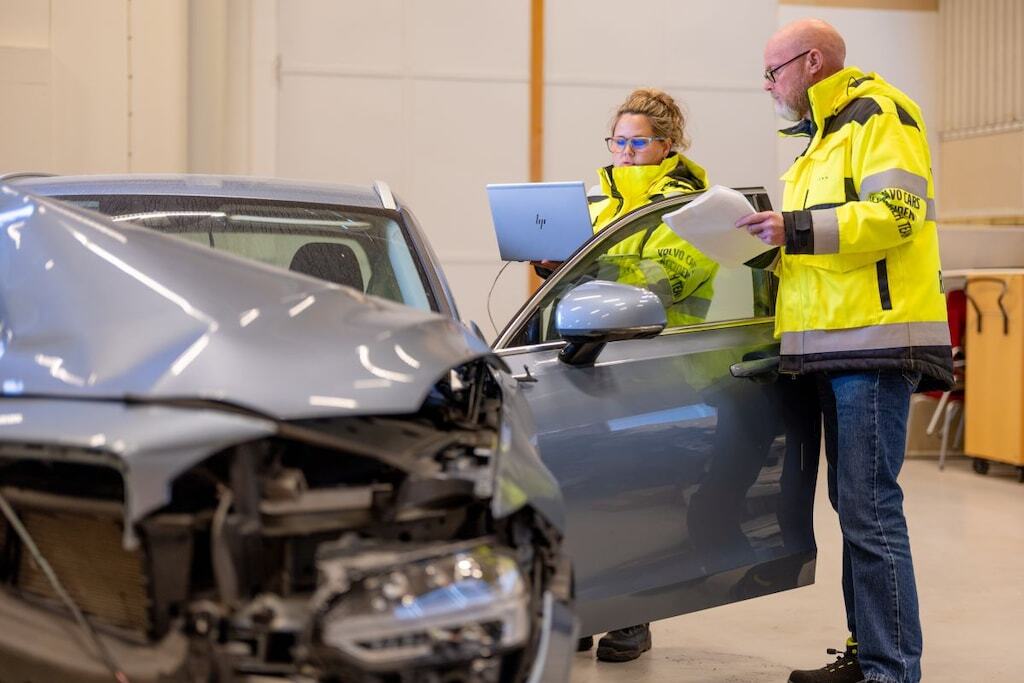
Data collection for continuous improvement
“It’s about understanding what the problem is in order to come up with the right solution,” says Mikael Ljung Aust, technical leader safety. So you need to know what is going on when an accident happens. Volvo collects data from accidents, particularly in Sweden. There are reports of more than 50,000 real accidents in the archive, which have led to 80,000 serious or less serious injuries. “In the past it was difficult to get data about accidents. It was difficult to extract data from the cars. But from the EX90 onwards this is easier. The car is built around the so-called core computer, which collects all data. Information is collected in and around the car with cameras, radar, lidar and other sensors. The main gain is that we can look inside the car. Previously, it was a guess as to what was happening there, but now we can read what happened in the car. Was the driver paying attention? Did he have his hands on the wheel?” With this information, the technicians can get to work to create better warning systems, for example.
Eric Coelingh, from Zenseact, a data collector connected to Volvo: “The world is super complex. It is not difficult for systems to recognize a pedestrian and stop for them. But there is no guarantee that all pedestrians will be recognized. With software defined vehicles, such as the EX90, we can collect data almost in real time. We can analyze that data with AI and use it to make improvements to the software, so that, for example, more and more pedestrians are ultimately recognized. And then we can update all cars over-the-air at the same time. All owners benefit from this, unlike ‘in the past’, when improvements were only available on new or improved generations of cars. And not on cars that were already driving around.”
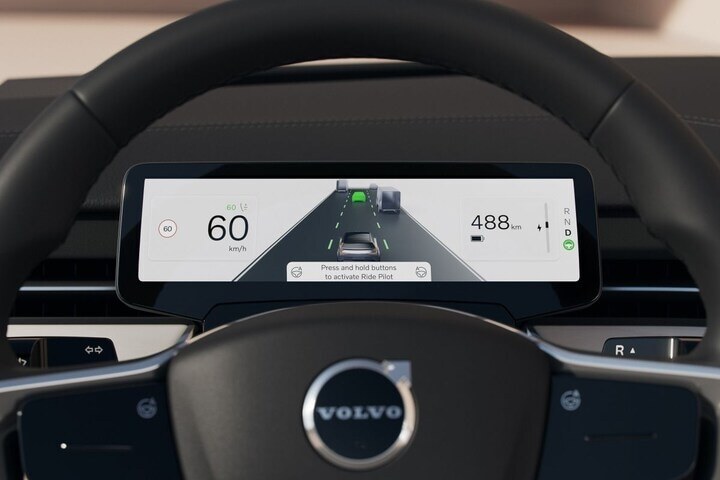
Effects of beeps
Since last year, all new cars have been required to have a warning sound if the driver exceeds the maximum speed. This usually happens with an alarm, sometimes with a vibration in the pedal. The notifications follow for minor violations and can be switched off, but they are automatically switched on again on the next ride. We can ask expert Mikael Ljung Aust, technical leader safety, whether such an alarm is actually so safe. He studies human behavior for Volvo.
“The warnings are not that useful, because people are very good at filtering out sounds that they don’t necessarily need to do anything with. If your refrigerator makes a strange noise, you hear it the first day, and after that your brain no longer transmits the information. The same goes for a warning sound that you know is either incorrect or, in your opinion, nonsensical.”
Instead of speed warnings, Volvo would prefer to take other actions to reduce speed. Ljung Aust: “We have limited Volvos to 180 km/h. It started the discussion about the danger of speed, although few people want to drive that fast or faster. But also: why would you drive 20 km/h too fast to your holiday destination for a few hours to then sit in a chair there for hours or days with a drink? Can’t we make the time on the road more pleasant?”
Another irritation is the attention warning. “EuroNCAP prescribes that the warning must be given after three seconds. But when we look at the data, we see that it is quite normal for people to look away for one, two or three seconds. But almost no one looks away for longer than four seconds. Passengers become anxious if the driver looks away for so long, we all know that feeling. So if we were to alarm at 4 or 4.5 seconds, the warning would be much more meaningful. You would get far fewer warnings. Instead of three or four times per hour, you go to twice per week. Then the warning also comes across better. You don’t become ‘deaf’ to it and you really become aware of the danger.”